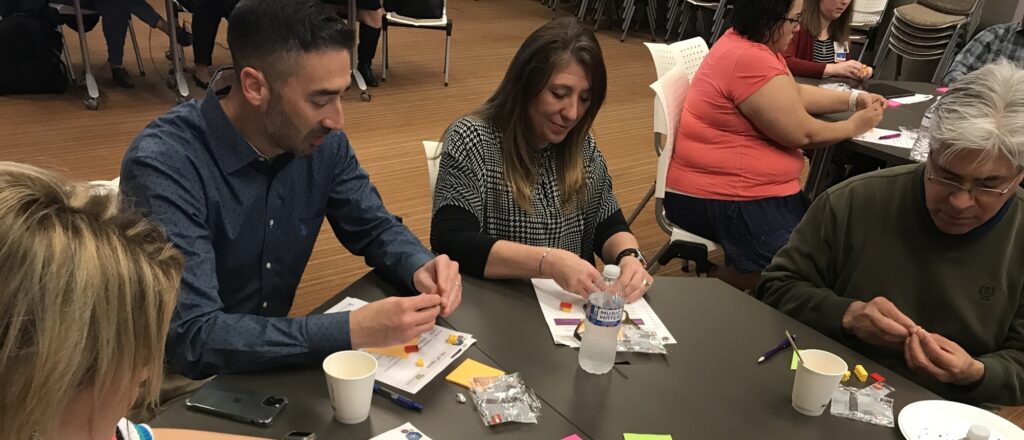In the vast expanse of Texas, over 5.5 million K–12 students are now experiencing STEM education as a foundational component of their learning journey, not as an optional add-on. This revolutionary shift came after research revealed that without early STEM awareness in elementary school, students are significantly less likely to pursue STEM careers later in life. Since 2018, the Texas Education Agency (TEA) has strategically expanded STEM programming beyond high school career and technical education to encompass all grade levels, embedding engineering practices into K–12 science standards in 2021 and computing into K–8 technology standards in 2022. This comprehensive approach ensures that every Texas student, regardless of background or location, develops the fundamental skills needed for tomorrow’s workforce.
About the STEM Ecosystem
The Texas EcosySTEM operates as a statewide network with twenty STEM Hubs serving more than 1,200 school districts across Texas. Their mission transformed STEM education from an opt-in choice to a mandatory component of education, guaranteeing all students receive quality STEM experiences that build career-relevant skills. The state agency collaborates closely with education service centers to support both formal classroom instruction and informal learning opportunities. By embedding STEM directly into core subject areas like science, the Texas EcosySTEM ensures every student in grades K–12 develops the practices and competencies essential for future STEM careers.

Innovative Practice
The Texas approach to STEM education stands out for its systematic integration into required subjects rather than treating it as a separate initiative. By embedding STEM into core curriculum areas—particularly science—Texas ensures widespread reach to STEM learning experiences across all grade levels. This strategy directly addresses the critical finding that STEM career pathways are significantly influenced by early exposure in elementary grades. The STEM Toolkit, developed by TEA, provides educators with comprehensive resources to develop and implement effective local STEM programming tailored to their communities’ needs.

The impact of this approach is tremendously far-reaching, with over 5.5 million K–12 students now receiving STEM education across more than 1,200 school districts. By shifting from concentrated high school career and technical education programs to a K–12 continuum, Texas is building a stronger foundation for future STEM professionals. The State Board of Education’s decision to embed engineering practices into science standards (2021) and computing into technology standards (2022) further strengthens this framework, ensuring all students develop technical skills aligned with workforce needs.
Implementation of this statewide initiative followed a structured, deliberate process:
- TEA created a dedicated statewide STEM position to develop K–12 programming
- Conducted comprehensive landscape analysis with input from educators, parents, and industry partners
- Developed a unified STEM framework based on community feedback
- Created the STEM Toolkit to support consistent implementation across districts
- Established the Texas EcosySTEM by connecting with the global STEM Ecosystem network.

Learn more about Texas EcosySTEM’s work:
5 Pillars of Thriving STEM Ecosystems Alignment
Texas EcosySTEM proudly serves as a vital member of the global STEM Ecosystem community of practice, a network that now encompasses more than 120 STEM Ecosystems worldwide. Through our collaborative efforts with partners across education, business, and community sectors, we’ve aligned our work with the 5 foundational pillars that drive successful STEM Ecosystems. Texas EcosySTEM stands as a compelling example of how these pillars can foster excellence and innovation in STEM education, creating meaningful impacts for students, educators, and industries throughout the state.

- SYSTEMS: Texas has architected a STEM framework that broadens the participation of students by embedding STEM into core curriculum areas, ensuring every student is getting STEM rather than treating it as an optional add-on.
- ALIGNING TEACHING & LEARNING: The approach seamlessly blends formal classroom instruction with support for informal learning opportunities through coordinated professional development.
- WORKFORCE: The initiative directly responds to workforce needs by developing essential STEM skills starting in elementary school and continuing through high school.
STEM Ecosystem leaders seeking to create systemic impact should consider replicating Texas’ approach of embedding STEM into required curriculum rather than creating separate programs, as this ensures all students gain critical skills regardless of whether they self-select into STEM pathways.
Want to connect?
To learn more about the innovative work happening through Texas EcosySTEM and how these initiatives are enhancing STEM education across the state, reach out to the STEM Ecosystem Lead, Michelle Thibodeaux-Sedberry, M.Ed., Statewide STEM Coordinator in Curriculum Standards and Student Support.

